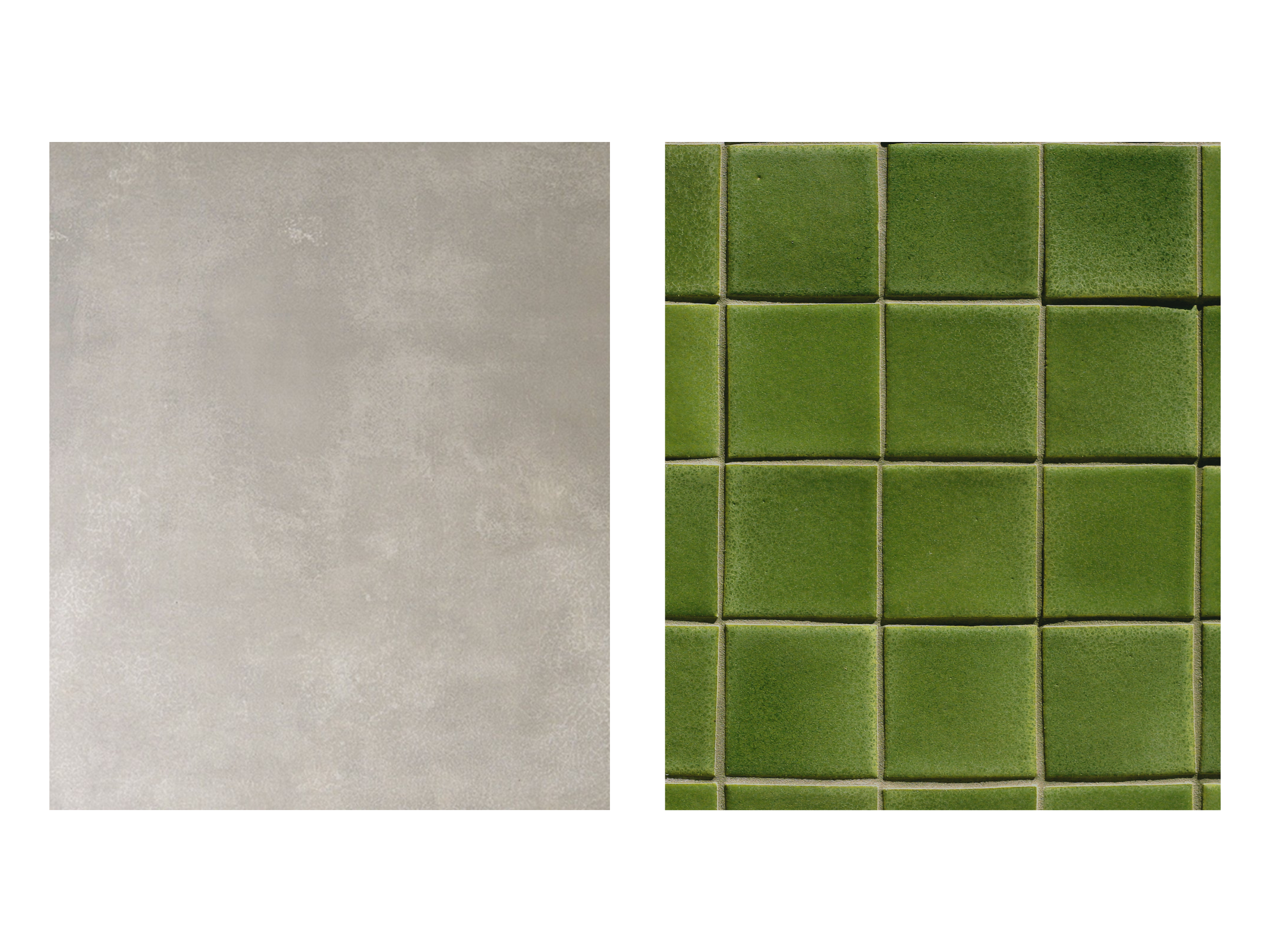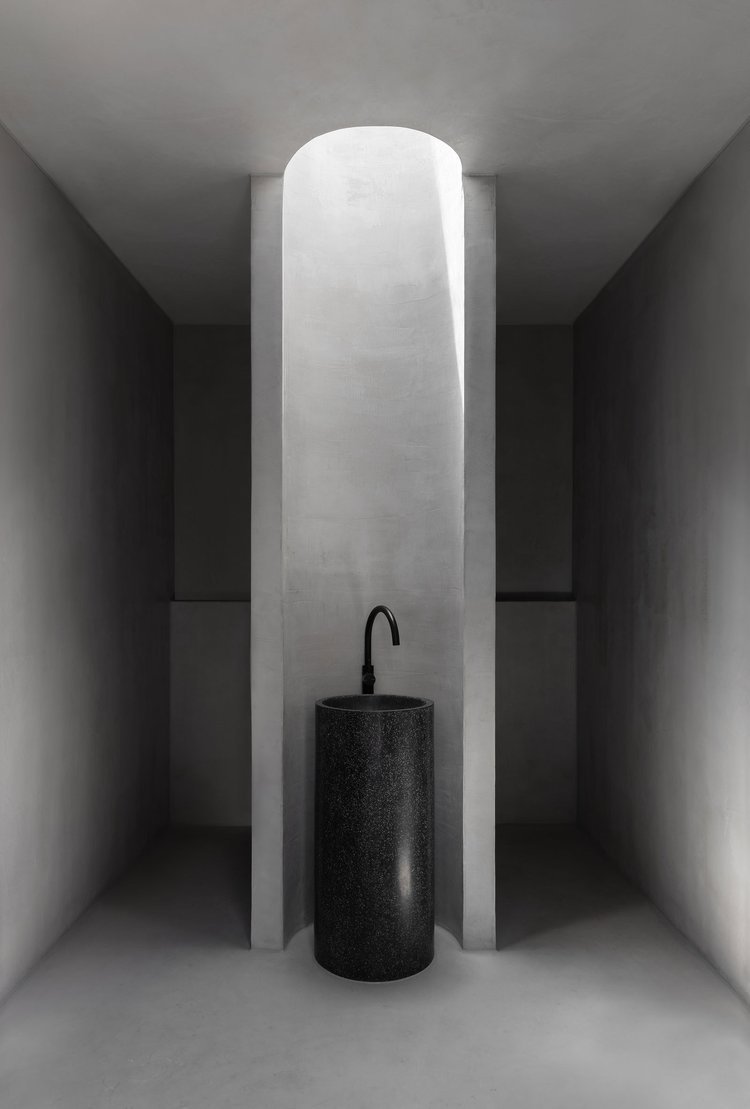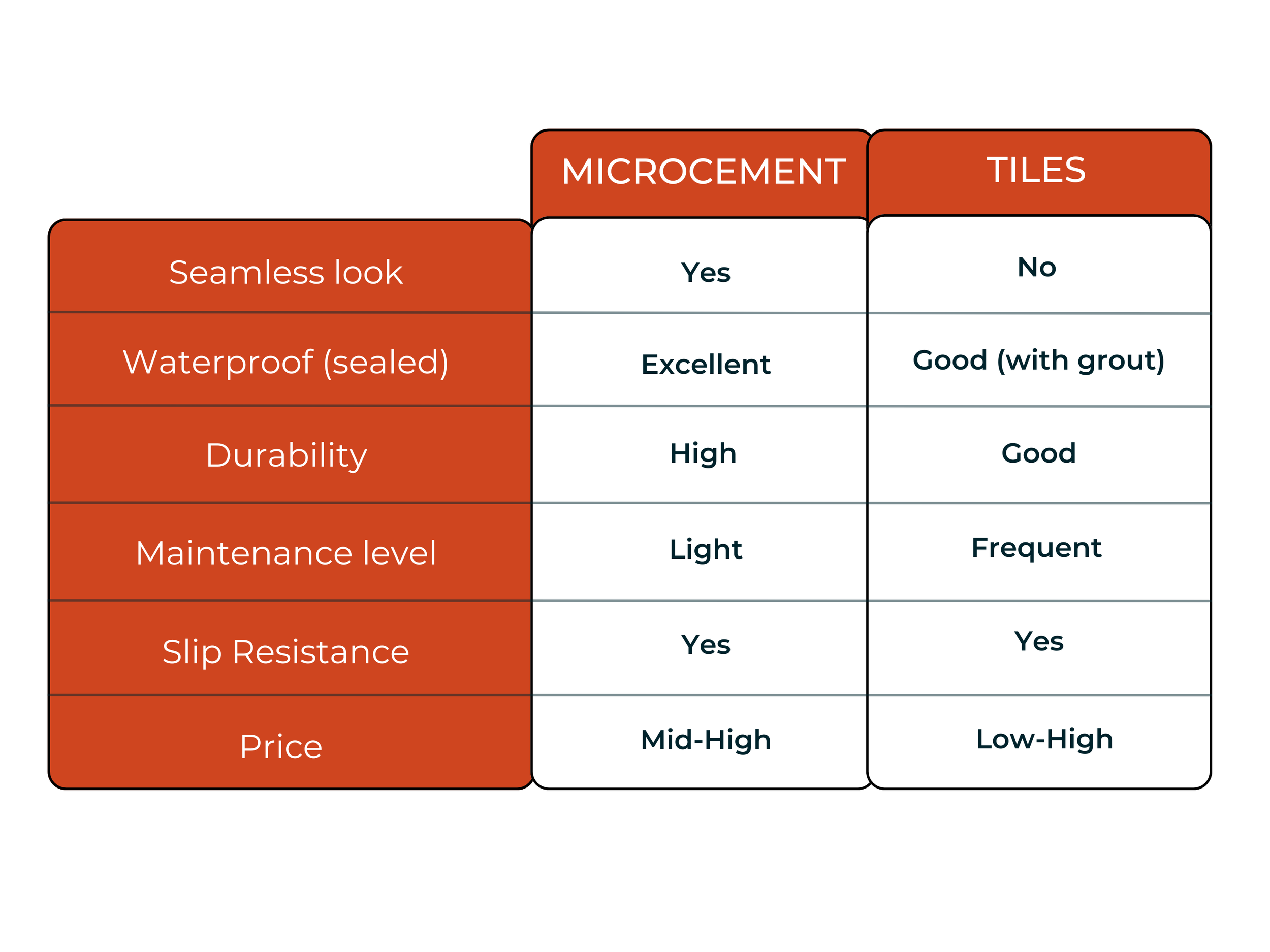Microcement vs Tiles in Bathrooms: What You Need to Know Before You Choose
Starting your bathroom renovation or selecting finishes for a new build? Are you finding yourself wondering, should I choose microcement or tiles?
Microcement has emerged as a durable, adaptable, and beautiful bathroom alternative to tiles for designers and home owners who love a sleek, minimalist aesthetic. Like all materials, its performance depends largely on the quality of the installation and the product chosen, so it’s important to research your microcement supplier first.
Tiles, on the other hand, have long been the go-to surface for bathrooms. If you're torn between these two finishes — one a common classic and another a modern innovation — you're not alone. They each offer distinct benefits and have their own unique characteristics. In this post, we break down the key differences to help you choose the right surface for your bathroom project.
1. Appearance: Seamless vs Structured
Microcement creates a seamless, joint-free surface. This is ideal for minimalist and contemporary spaces where you want to eliminate visual clutter. But you don’t have to worry about being too plain — due to its hand-troweled application, there’s visible texture in the finished surface, which can be mixed in a wide range of colors from Mediterranean-inspired beige to industrial matte gray and custom pinks.
Tiles offer more structure and repetition, with thousands of options in shape, pattern, texture, and color. They can be traditional or ultra-modern, vibrantly colored or neutral-toned, but grout lines are always part of the aesthetic.
Summary: Choose microcement if you want a smooth, uninterrupted look. Choose tiles if you love pattern, detail, or contrast.
2. Waterproofing & Performance
Both microcement and tiles can be waterproofed. The protection comes from what's beneath.
Microcement, when applied correctly over a waterproofed substrate and sealed, forms a continuous waterproof barrier. There are no joints, which means no weak points for moisture to creep in. Rest assured, water exposure and steam won’t impact the beauty or functionality of your X-Bond shower.
Tiles rely on the strength of the grout to maintain waterproof integrity. If grout cracks or isn't re-sealed regularly, moisture can penetrate and lead to issues like mold or leaks.
Summary: The winner for watertight performance is microcement (when professionally installed).
3. Durability Over Time
Microcement is incredibly durable when installed and sealed properly. It’s hardy and impact-resistant like concrete, resists de-lamination (if you choose X-Bond and SEMCO sealers), and doesn’t stain or discolor when exposed to spills from common bath/shower products. However, poor workmanship can lead to failures such as hairline cracks, so it should be installed by someone who’s experienced in its application.
Tiles are also durable, especially porcelain and stone varieties. But grout is the weak point — it often gets stained or moldy. Similarly, dropping things on tiles can cause them to crack since they’re made from more fragile materials than cement.
Summary: The winner for durability is microcement (when professionally installed).
4. Cleaning & Hygiene
As mentioned, microcement has no grout lines, which means fewer places for soap scum or grime to build up. A damp cloth and pH-neutral cleaner usually do the trick, every now and then.
Tiles require regular cleaning of both the tile and the grout. Grout can harbour bacteria and may need periodic resealing or even regrouting in the long term. It’s also quite a common place for mold to pop up.
Summary: The bacteria-friendly winner for ease of maintenance is microcement.
5. Slip Resistance
We can’t speak for other products, but X-Bond Microcement can be customized to improve slip resistance, especially in wet zones like showers and floors. However, even our standard finishes are slip resistant.
Tiles also come with slip ratings, so you can choose surfaces specifically rated for wet areas. Textured or matte tiles tend to perform best here.
Summary: It’s a tie – both materials can be slip-safe when selected/finished properly.
6. Flexibility & Versatility of Applications
Microcement can be applied directly over existing surfaces, including tiles (with the right prep). Because it’s hand-troweled, it can be installed easily on a variety of areas in bathrooms: showers, floors, walls, ceilings, vanities, joinery, and even bathtubs — any level, hard surface. This versatility is a huge benefit, especially in renovations where you want to resurface old materials.
To install tiles in a renovation, it may require the demolition of existing finishes first. There are design limits too, as it’s harder to apply tile a curved surface.
Summary: The winner for versatility and creative freedom is microcement.
7. Cost Comparison
Microcement is a premium finish and tends to be more expensive per square foot than basic tile options. Perfecting the installation process involves specialised knowledge and training, so we don’t supply it for DIY applications — this means you also will have to pay for the labour involved. However, it can offer cost savings by eliminating demolition, reducing trades needed, and creating a high-end look without expensive materials.
Tiles range from budget to luxury. If you opt for standard ceramic or porcelain, tiles are generally cheaper. High-end natural stone, mosaics, or designer tiles can cost as much — or more — than microcement. They’re also more readily available for DIY installation, or it’s easier to find tilers offering competitive pricing as it’s a more traditional, common material than innovative microcement.
Summary: Tiles is the winner for budget builds. For a luxury look (that’s cost-effective compared to other high-end alternatives), microcement is a good choice.
The Verdict: Microcement or Tiles?
*Based on SEMCO X-Bond Microcement
So, if you’re after a seamless, low-maintenance, and durable bathroom with a versatile material suited to a wide range of surfaces, microcement is hard to beat — especially in showers and floors where joints and grout are problematic. It’s not just a surface; it’s a functional material that makes for a modern design statement.
Tiles are still a solid choice for more traditional looks, bold patterns, or budget-conscious builds. But for homeowners and designers looking to push boundaries, microcement offers next-level freedom and finesse.
Thinking about microcement for your bathroom? Contact SEMCO Surfaces to speak with our specialists and find an installer in your area.











